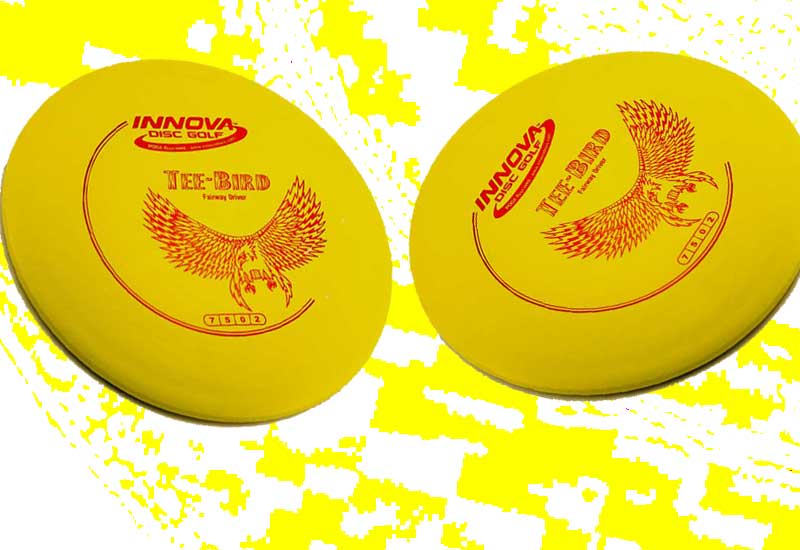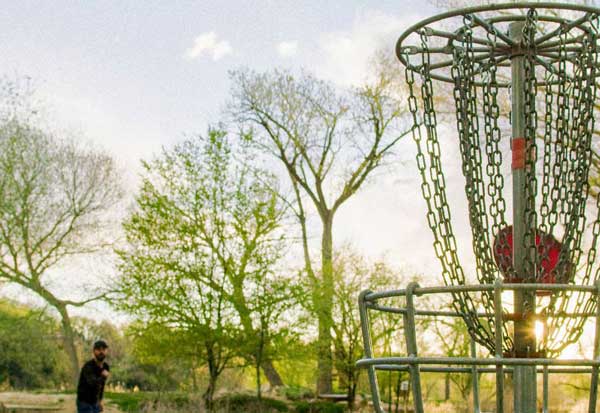
There are 3 ways to release a disc. Flat, Hyzer & Anhyzer (Anny). A flat release is just that – you release the disc on a horizontal plane without any tilt.
But when you want to put some angle on the disc or get it to move a certain way to emphasize or counteract the discs stability, you use Hyzer or Anhyzer angles.
Naturally this is where you get to have a lot of fun trying to bend and skew the flight of the disc. And when you pull it off satisfaction looms.
For hyzers point the top of the disc downwards, or away from you. Anhyzers do the exact opposite, point the top of inwards or towards you.
Interestingly if you’re playing Ultimate Frisbee the two terms have different names. An Anhyzer is called an outside-in and the hyzer is called an inside-out.
All these terms refer to the angle (or none if flat) that you release the disc from out of your hand.
Still Confused?
The angle you release the disc work hand in hand with the discs stability to determine how the disc flies. Naturally, you use this to your advantage! Release the disc flat and the disc will fly close to the flight chart that accompanies the disc.
Remember releasing the disc on a hyzer angle means the top of the disc is pointed towards the ground or away from you. To throw a anhyzer point the top of the disc inwards or towards you.
Technically throwing it flat, on an annie or hyzer only refers to the angle you release the disc. You don’t actually throw an anhyzer. It’s just refers to the angle the disc leaves your hand.
In Simple Terms
Hyzer – If you are a RHBH (right hand backhand thrower) when you throw a hyzer the left or outside edge of the disc is tilted down to the ground.
Anhyzer – Once again assuming you are throwing a RHBH shot the left/outside edge of the disc is tilted up.
Flat– is self explanatory- the disc is pointed flat or more or less horizontal when it’s released.
How Does This Work Out On Every Day Life On The Course?
Courses aren’t built on a flat Vegas like plane. Many are wooded, have lakes, or ponds, crazy angles between holes and out of bounds areas. Just to add some fun and spice up the playability. So you can use angles to carve out peculiar angles to navigate obstacles and find a safe spot on the green.
You’ll have to master curving discs right to left and left to right just to get around obstacles, and also to gain extra distance with your disc.
Have you heard people talking about flipping up to flat? Believe it or not flat shots are some of the hardest shots to perfect. I mean completely dead straight shots. One way to achieve this is to get a really stable disc.
So if you need to hit a straight mid-range drive down the fairway think of a Discraft Buzzz. Apply the power to give it distance and keep it straight.
But you can also do the same with angles. So say you are stuck in the woods and you need to cut a laser straight path between the trees you can also use a sidearm anhyzer release if you are a righty. You don’t just get flat with a flat release.
An anhyzer will let it flex to the right and then come back. My more preferable way I would use in a tight spot is flip to flat with a sidearm hyzer release. This works better with a disc that’s more understable than you’d normally use for forearm shots.
So when you’re in a tight spot or just want to flip it to flat put a little bit of hyzer and barrel it straight down the fairway. You don’t need crazy power let the stability of the disc go to work for you.
Catch it good and it’ll flip up and glide down the middle. An understable disc will stand up and do the work for you.
Angle Left Baby
- If you are a RHBH thrower put a slight angle on the disc and it will move slightly to the left
- Add more angle and the disc will fly a bit more to the left
- Add an extreme angle and the disc will fly even further to the left – as much as it is physically possible for the disc
- Once you start to tilt the disc past 30 degrees it starts to turn less to the left – so its all about practising your angles. Maths certainly helps in disc golf! If it’s not your forte practice, practice and practice some more until it becomes second nature
- Once you move the disc to a vertical position the disc stops turning left and transforms into a spike hyzer. See below
Throwing Tips
Visualize the flight path and imagine where the curve of the shot will be before you throw it. The apex is the furthest or widest point of the curve before the disc starts to turn.
Fix your eyes on that spot and work out where to throw that line. Don’t worry you will soon get the hang of it once you throw a couple of hundred shots.
That’s why it’s good to go find a green or a beach and take a bag of discs just to practice drills on your own. This is going to help you with accuracy and distance.
For anhyzer shots when you’re winding up for the shot keep your hand above your shoulder. Don’t start with your arm pointed low to the ground.
If you start with the disc low to the ground it’s not going to roll over and can fade hard left..
A 180 degree angle is fine for starting your throw. Don’t wind back as far as a discus thrower. Straight back on a 180 degree line is fine.
Mark out half a circle in your head and you’ll get a more consistent release. Angle your feet towards the line of flight.
Extreme Hyzers
A throw type with a high hyzer angle is called a spike hyzer. The shot is launched high into the air, causing it to slant out as it ascends and spikes back down vertically. Once it hits the ground it is stopped instantly without rolling or skipping. When would you use a spike hyzer? When you have to clear a tall obstacle if front of you without having the disc fade too much once you get over it.
So the primary goal is to send the disc up so it comes straight back down without any angle to the left if you are a RHBH thrower. Overstable discs are recommended for spike hyzer shots.
The spike hyzer can be confused with a grenade. A grenade will go up and straight back down finishing in the ceter if you use an overstable disc. If you use an understable disc it will finish slightly to the right.
Coming Soon
Explode Your Disc golf Skills
- Drills To Improve Your Game
- Fitness & Power Tips To Give You The Edge
- Insider Secrets
